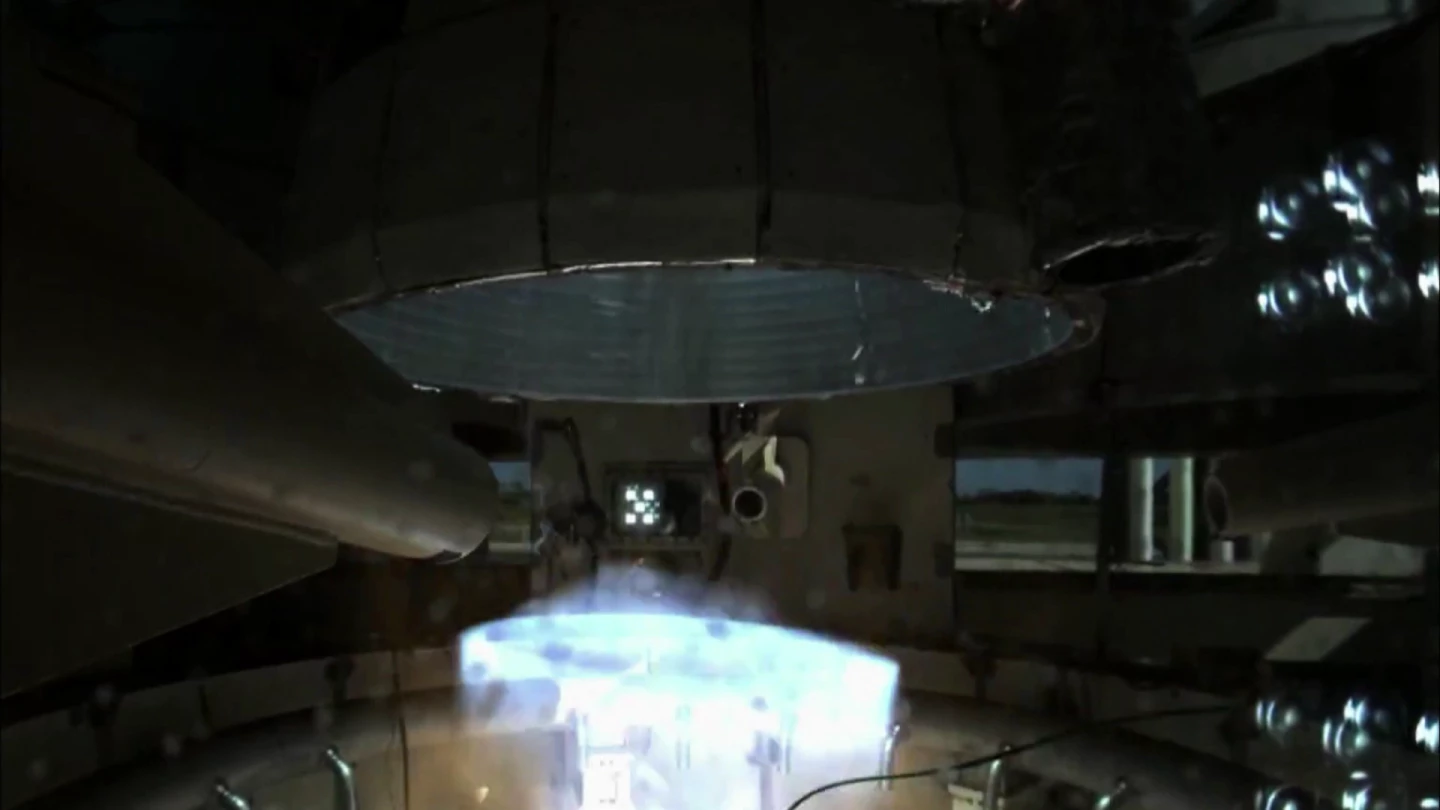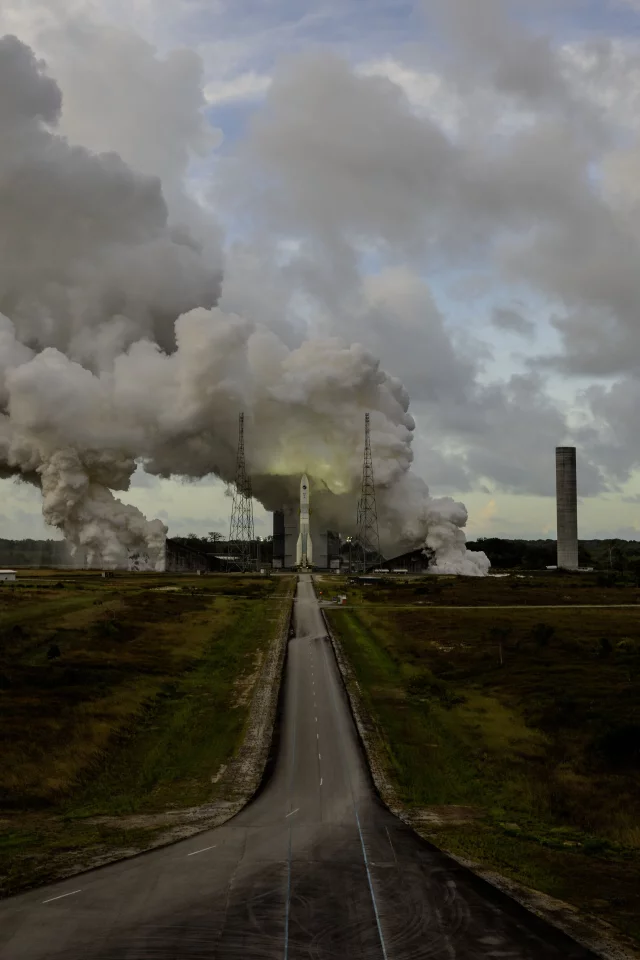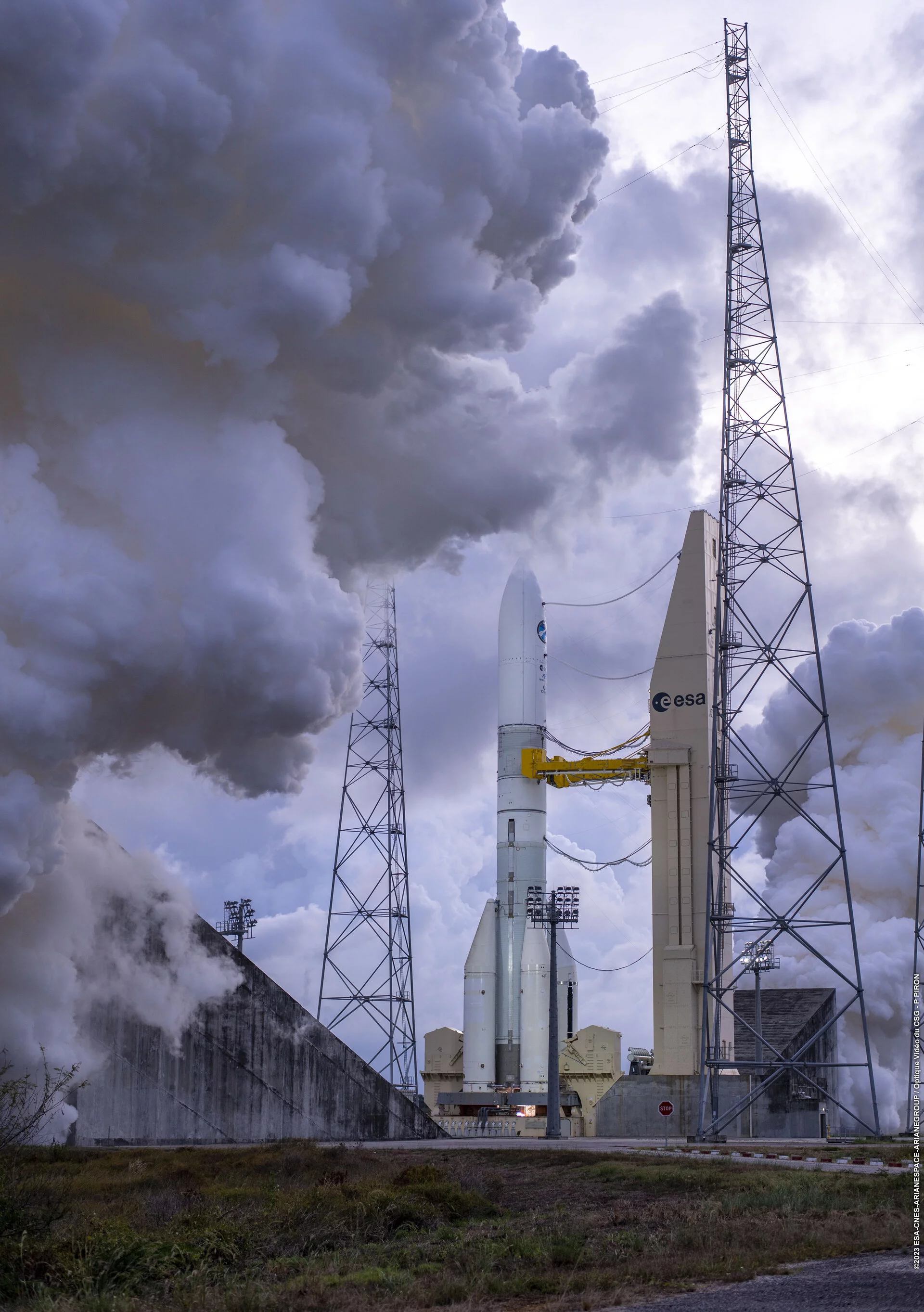ESA's next-generation Ariane 6 heavy rocket came another step closer to flight on November 23, 2023 as it completed a long-duration hot-fire test of the stacked booster's Vulcain 2.1 engine at Europe’s Spaceport in Kourou, French Guiana.
With so many space launch startups cropping up all over the world, it might seem like there's no shortage of choice for getting into orbit. However, there are only a handful of rockets that can handle heavy payloads and ESA hasn't had one since the Ariane 5 was retired in July 2023.
To remedy this, ArianeGroup and its partners are developing the Ariane 6, which is scheduled to make its maiden flight sometime in early 2024. It's essentially an improved version of the Ariane 5 with better performance, yet is simpler and cheaper to build and launch. Depending on desired orbit and variant, it will handle payloads of between 4,500 kg (9,900 lb) and 21,650 kg (47,730 lb).

The November hot-fire test conducted by ArianeGroup, the French Space Agency (CNES), and ESA is the latest in a series of ground tests over the past year of the rocket, the launch system, support infrastructure, and launch procedures. Where previous tests focused on different systems and how to integrate them, as well as very brief engine firings, the latest was essentially a space launch with the hand brake on so the Ariane 6 couldn't leave the ground.
The test involved all factors that go into a real launch, including the countdown, fueling of the first and second stage with liquid hydrogen and liquid oxygen, the removal of the launch gantry, the synchronization of all systems, and all the usual Go/No Go checks for flight.
The climax of the test was the firing of the single Vulcain 2.1 engine that powers the first stage core. After ignition, the engine burned for a full seven minutes, generating a maximum of 310,000 lb of thrust.

If the results of the test are satisfactory, Ariane 6 and its launch systems will be closer to final qualification for flight.
"Ariane 6 now has a core stage and an upper stage which have undergone all testing necessary to be ready for the inaugural flight," said Martin Sion, CEO of ArianeGroup. "Successfully completing such complex stage tests is a real industrial feat and I would like to congratulate the teams from ArianeGroup and all our partners, particularly ESA, CNES, and DLR, on the high quality of their work. On this final stretch towards the first flight, we still have to carry out a few additional tests to demonstrate fault tolerance, deliver the first launcher to Kourou, and perform the launch system qualification review."
The video below replays the hot fire test.
Source: ArianeGroup









